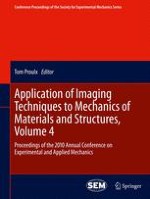This the fourth volume of six from the Annual Conference of the Society for Experimental Mechanics, 2010, brings together 58 chapters on Application of Imaging Techniques to Mechanics of Materials and Structure. It presents findings from experimental and computational investigations involving a range of imaging techniques including Recovery of 3D Stress Intensity Factors From Surface Full-field Measurements, Identification of Cohesive-zone Laws From Crack-tip Deformation Fields, Application of High Speed Digital Image Correlation for Vibration Mode Shape Analysis, Characterization of Aluminum Alloys Using a 3D Full Field Measurement, and Low Strain Rate Measurements on Explosives Using DIC.
